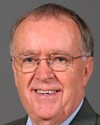Mr. Speaker, it is an honour to speak to the bill. I want to articulate a challenge we have in the future in terms of emergency management within our country.
When we were in government, we implemented a number of suggestions that would go a long way, but we also have a number of challenges that still need to be addressed by the government.
One thing we did was pre-deployed a number of hospitals, which we used internationally. These hospitals are made up of about 200 beds each and they can be deployed on quick notice for emergencies and urgencies within our country.
The other thing we did was set up a spot in Ottawa that was open 24/7. Its job is to act as a central brain to coordinate the internal management of emergencies within our country. We have coordinated that centre in Ottawa to other areas of the country. Each province has its own management centre, which is tied to areas on the ground.
It is important for the public to know what happens in the case of an emergency.
Our first responders are our police officers and firefighters, who do an outstanding job. If there are emergencies in our communities, they respond first.
The second responders are our Canadian Forces. If an emergency is too large for either of those groups to deal with it properly, then we call in other assets from around the country. That is the internal coordinating mechanism we put forward. However, there are some challenges that need to be worked out and these are some of the things I hope the government will pursue. One is the issue of communications.
What we have seen in the case of hurricane Katrina and other instances, is when there is an emergency, particularly a big one, the civilians, who are victims, are the emergency workers as well. The first thing emergency workers will do is take care of their families, which speaks to the problem of communication.
When there is an emergency or an urgency, one of the first things to go south is the communication network. It falls apart. What we have tried to fast track is an internal communication network across our country that is independent of the existing communication networks. It is absolutely imperative that the government continues the work we did and fast track the need for a domestic, emergency communication network that can be deployed by our first and second responders in the case of an emergency.
I cannot overemphasize the need for this. We learned from Katrina and our Canadian Forces, in their incredible response to the situation in Louisiana. We found that the American response to Katrina was wanting. It was instructive not only for the Americans, but also for us to assess that situation and learn some lesson from it, and we did.
Having learned those lessons and identified those problems, it is important that we act upon them. I want to emphasize the absolute need for the government to invest in and implement, as soon as possible, an emergency coordinating communication network that will not fall apart in the case of an emergency.
I know in my province of British Columbia there is a great worry, naturally, about a tsunami or an earthquake. We know that some time within the next 100 years we will have a massive earthquake as the two plates on the west coast collide and grind against each other, which will cause a lot of problems. Therefore, we need to do a better job of coordinating those mechanisms.
The other thing the government ought to do is engage and upgrade the training for our firefighters, our police officers and our military in the area of HAZMAT, hazardous materials. Hazardous materials require a certain specific area of capabilities and equipment. It is very important for the government to make investments in the equipment and training that we started with respect to our firefighters, our police officers and our Canadian Forces.
One of the things the government could do that would be quite intelligent would be to utilize our reserves. When I was the parliamentary secretary to the minister of national defence, one thing I was working on was the possibility of utilizing our reserves as part of a second responder team. They would receive the training and equipment that would enable to come together in the communities and be the second responders in the case of an emergency that overwhelmed our police and firefighters.
It is also very important for the government, and our government had started this process, to look not only at the lessons learned from hurricane Katrina, but also at the lessons learned from the 9/11 report. The 9/11 report was very good at laying bare the challenges faced by the authorities in the United States in responding to the terrorist attack in New York. Analyzing and dissecting the 9/11 report would enable our authorities to take a good look at what would be required by government officials in implementing the urgent responses required.
On an international scale, I want to put in this plug right now for the minister responsible for CIDA. There is one problem that I have seen internationally, and it is that whenever there is a massive international emergency, we always start from square zero, so to speak. That is not necessary. CIDA ought to be working through the World Health Organization to establish an integrated mechanism of first responders. We would then have on a computer a listing of heavy lift equipment, emergency medical and military personnel, engineers and others, along with the assets, the perishable foods, tents for shelter, water, and water purification systems, everything that would be needed for a massive emergency. All of it should be established in a database.
Then, if there were an emergency on the west coast of British Columbia, for example, or an emergency in Asia Minor again, where there are always tragedies because of its location in an earthquake zone, rather than starting from square one and trying to identify all these assets, rather than trying to compile them from square zero, so to speak, we would be able to work and lead with the World Health Organization and our health action crisis group and Dr. Alwan.
We could establish an emergency response in which, with the click of a finger on a computer, we could identify those assets. That is the model we use in emergency medicine. There is absolutely no reason why we cannot take that micro-model and translate it into the international sphere. No one has done this before. Whether we are working in an emergency department where we have what is called the golden hour or in this, we know that same narrow window of time applies to international emergencies.
Canada could lead on something like this. If we worked with multilateral organizations and implemented the mechanism that I have suggested, we would be able to save a lot of lives. No one has done this before. It is a niche that our country can champion. It is a niche that we can adopt. It is one that we could use by tapping into the best and brightest minds in our country and others. Essentially, we could develop a coalition of the willing. It would be a true coalition of the willing, an emergency response group specifically developed to deal with emergency situations around the world.
A failure to do this would be unconscionable. We have seen time and time again that dealing with emergency situations in slow motion causes increased levels of mortality and morbidity. If a person is stuck in that kind of emergency situation, the fact is that the person's life can be saved or the illness or injury avoided. It is simply not right for someone to die in an emergency situation when we can do otherwise. I am suggesting to the government that we as a country, we as a Parliament, champion these solutions, which will go a long way to saving many lives.







